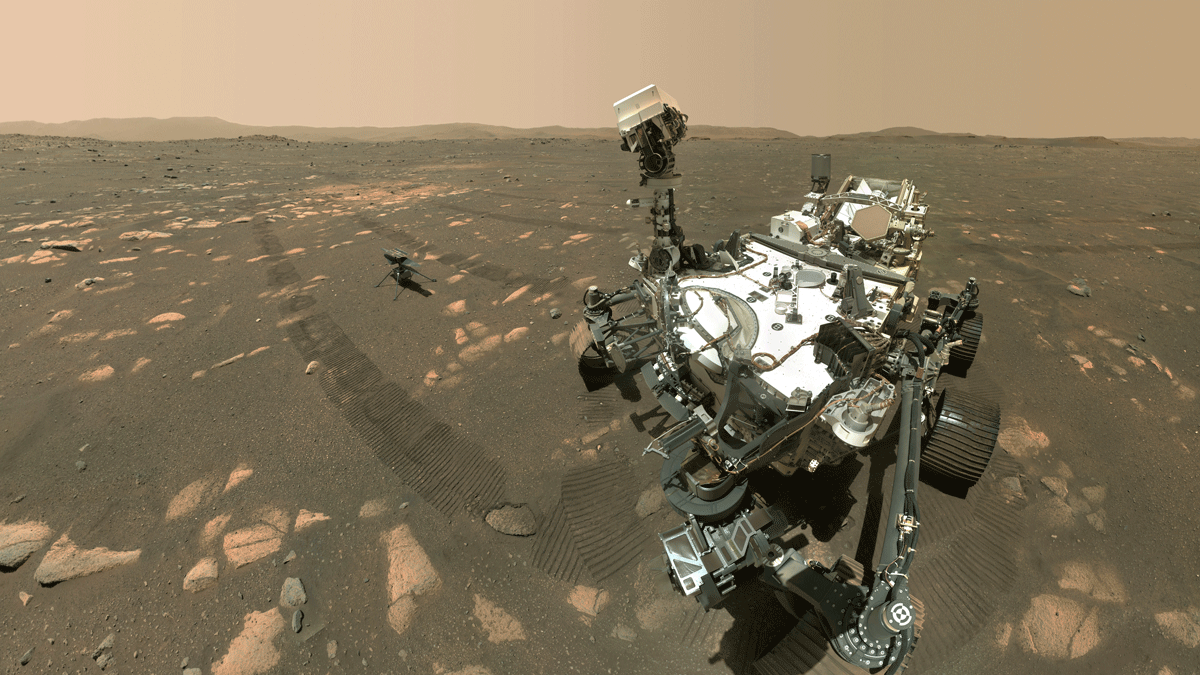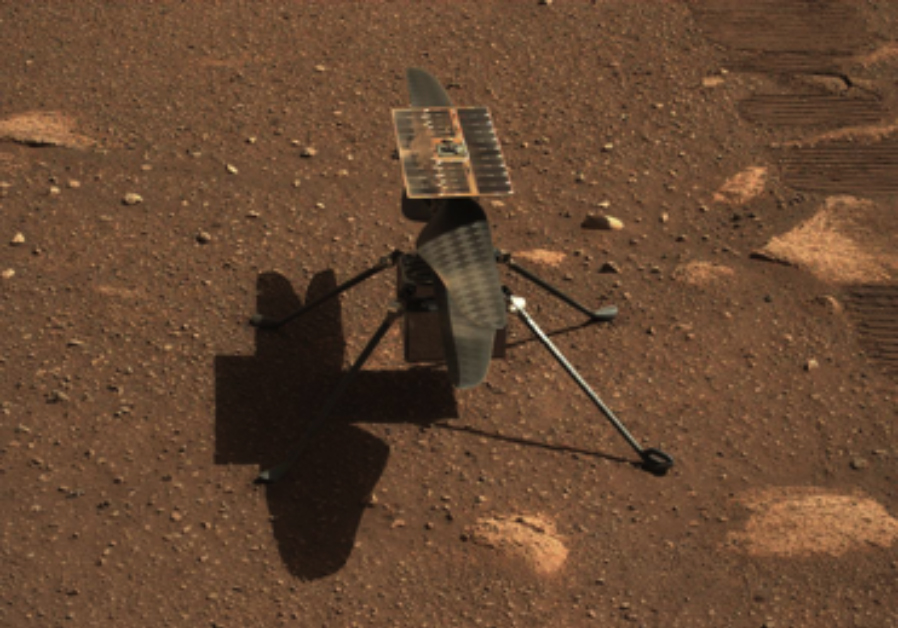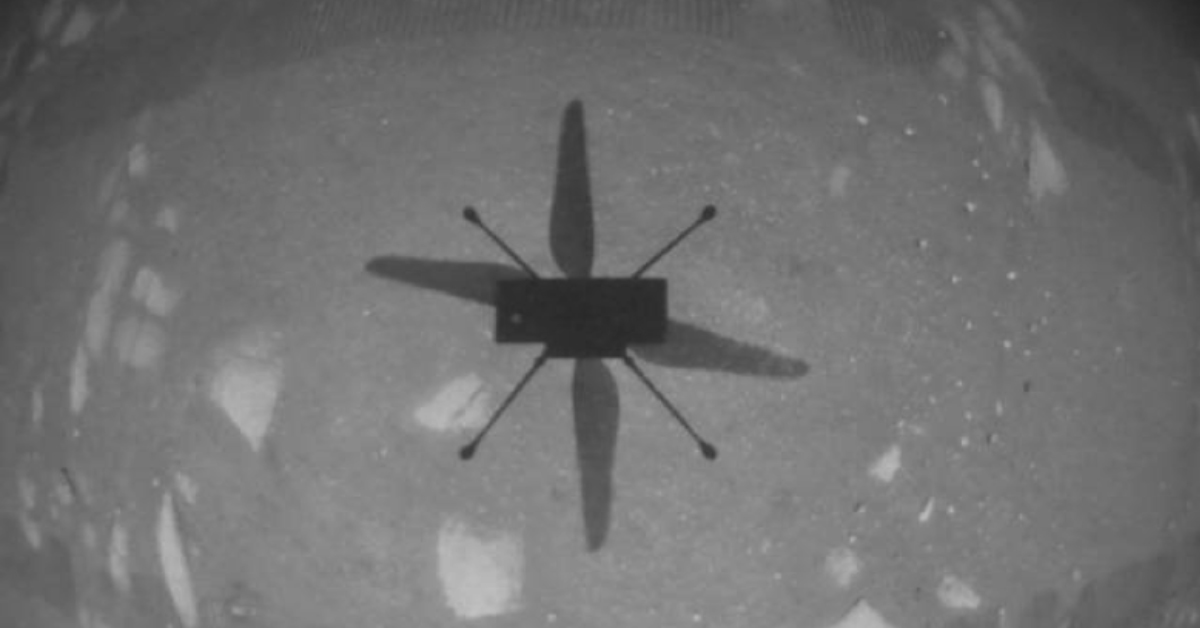NASA’s remote-control game is out of this world. Literally.
The above black-and-white picture might come across as something plain and simple. But it exudes so much more than that. It’s innovation. It’s blood. It’s sweat. It’s Perseverance. It’s Ingenuity. And perhaps most strikingly – it’s human.
A new dawn for space exploration
On April 19 NASA opened a new chapter in space exploration as the aptly named Ingenuity helicopter made its historic maiden flight, the first powered and controlled flight on another planet.
The 1.8 kilogram (four pound) rotorcraft took off at 7:34 a.m. GMT, climbed to its prescribed altitude of three meters (10 feet), swayed in the Martian breeze and touched down after logging 39.1 seconds of flight. Bask yourself in this glorious video of Ingenuity taking off, shot by the Perseverance rover with Mastcam-Z and Navcam imagers. Sitting about 64.3 meters (211 feet) away, the rover acted like its guardian angel, while doubling as a communications relay between the helicopter and Earth.
Only 117 years ago (which is a relatively short period of time on the Holocene epoch time scale) the Wright brothers succeeded in making the first flight on our planet. Though separated by 42,858 days and 278 million kilometers (173 million miles), these two iconic moments in aviation history will forever be intertwined. Here’s a fun fact: In homage to the 1903 Wright Flyer, Ingenuity carried a piece of fabric from Flyer’s wing.
What an amazing time to be alive!
These are – I kid you not – actual photographs taken by the Perseverance Rover. We can’t stop marvelling at the absolute clarity of these images!
 |
 |
| Left: GIF image of a selfie with Ingenuity taken by the Perseverance Rover |
Right: A close-up image of Ingenuity. Photo credits: https://mars.nasa.gov/ |
The drone traveled to the Red Planet by hitching a ride under the belly of the Perseverance Rover, which landed on February 18 to probe for signs of ancient microbial life (hang in there, Matt Damon). The ultimate goal is to pave the way for human exploration on Mars.
But wait – you might be wondering what’s the big fuss over Ingenuity’s test flight?
Demonstrating technological prowess
In essence, NASA is just showing off how far we’ve come in terms of technology and engineering. But seriously, the technological challenges in conducting a helicopter flight on another planet is frankly, mind-boggling, to say the least. Apart from not being able to provide commands to the drone in real-time, engineers had to overcome the flying conditions on Mars that are rather different from those on Earth.
To take off, the blades of a helicopter must spin quickly enough to generate lift. But here’s the catch, in order to generate lift, you’ve got to have some sort of atmosphere for the blades to push against when it’s attempting to fly. And Mars’ extremely thin atmosphere – about 100 times thinner than Earth’s – does not work in its favour.
While the reduced gravity on Mars (about one-third that of Earth) helped to offset the effect of the much lower atmospheric pressure, Ingenuity’s blades had to compensate for the lack of air by spinning much, much faster – about five times faster – than helicopters on Earth in order to produce the required lift. Accomplishing such a rapid spin rate for both the 1.2 meter long carbon fibre blades alone is already a major feat in propulsion technology.
Undocking future space missions
While the Ingenuity team celebrated this historic moment, their mission is far from over. Following its first successful flight, the drone will attempt up to four more increasingly adventurous flights.
Fingers crossed, these experiments will prove that rotorcraft technology is viable on the Red Planet, further transforming the way we explore distant planets. Doors to a whole lot of other possibilities would be flung wide open. Drones could be used to investigate surfaces that rovers can’t reach, or even scout ahead for astronauts once they eventually get to Mars.
Michael Watkins, the director of the Jet Propulsion Laboratory at NASA said: “What the Ingenuity team has done is given us the third dimension. They freed us from the surface now forever in planetary exploration, so that we can now make a combination of course, of driving on the surface and sampling the surface and doing reconnaissance and even scientific experimentation on inaccessible places for a rover. This is exactly the way we build the future.”
And the future is closer than we think. NASA has already approved another space-drone mission to Titan, the largest moon of Saturn. Scheduled for a 2027 launch, the mission, dubbed “Dragonfly”, will deliver a rotorcraft to Titan in search of the building blocks of life.
Exciting times ahead for space exploration! And maybe it’s time to popularise a new catchphrase – “One small hop by Ingenuity, one massive leap for humankind”.




































